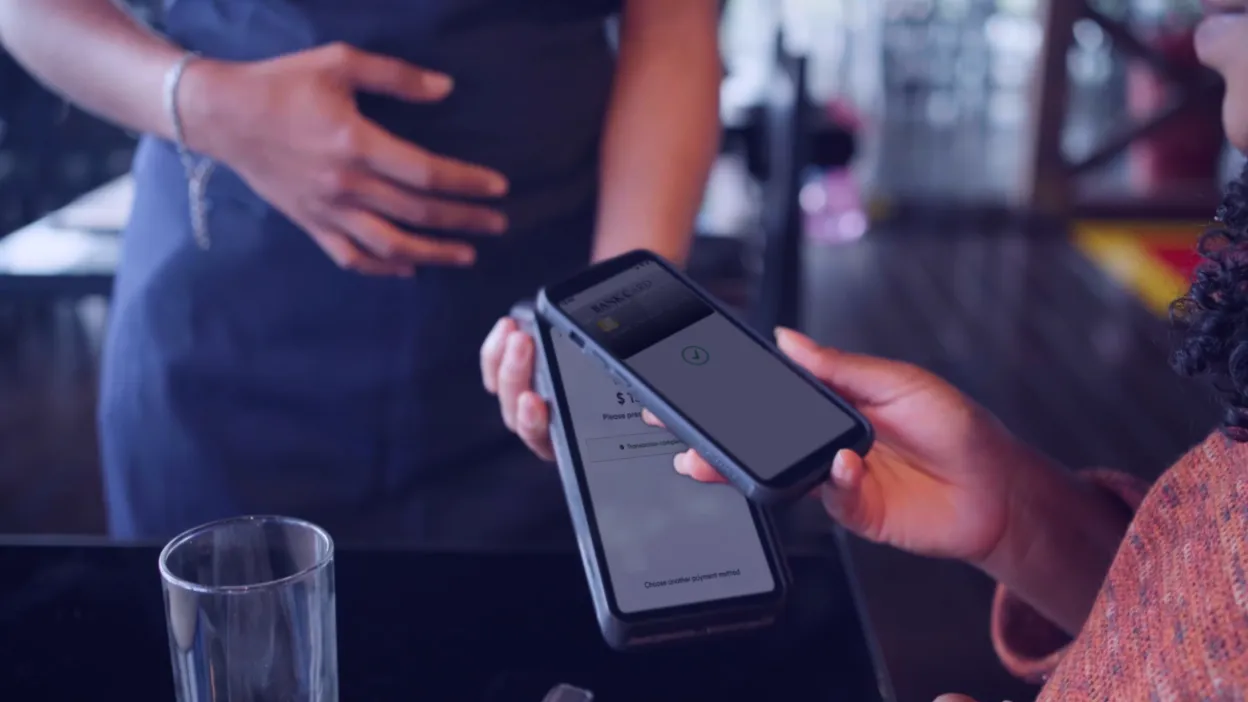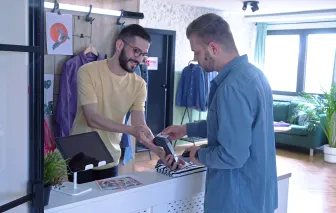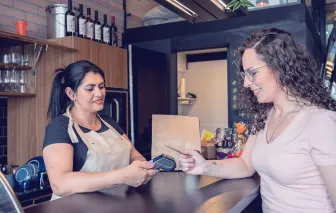Why Merchants Must Accept Contactless Payment Methods in Canada
Listen to this article

Contactless payments have become a go-to payment method for Canadian consumers. Between 2021 and 2022, the volume of contactless payments increased by 11% and the value by 18%, reaching 7.5 billion transactions totaling $379.7 billion.
Consumers can choose from a few different contactless payment methods. Most credit and debit cards have embedded contactless chips, so consumers don’t have to insert or swipe them. Further, the majority of contactless cards do not require the user to enter a PIN or interact with a payment device other than waving or tapping their card. A card reader with near-field communication (NFC) technology, a form of radio frequency identification (RFID), communicates and captures data from the chip to complete the transaction.
However, consumers can also use smartphones or other mobile devices to make payments. Mobile wallet apps like Google Pay, Samsung Pay, and Apple Pay, allow consumers to store their personal card data on their mobile devices for payment. Interac reports a 53% surge in mobile debit contactless payments for purchases made in stores between 2022 and 2023. Furthermore, the transaction value of mobile POS payments is projected to reach $43.16 billion in 2024 and $78.28 billion by 2028.
Additionally, consumers are increasingly making payments with wearable devices, like smart watches, fitness trackers, and rings. Consumers performed $902 million in contactless payment transactions in 2022, an increase of 37% year over year.
Consumers are also finding more opportunities to make contactless payments directly on a smartphone or mobile device using softPOS technology. Solutions compliant with the Payment Card Industry’s MPoC standard allow merchants to accept contactless payments anywhere with consumers’ mobile devices – no additional card accepting hardware is necessary.
Why Consumers Prefer Contactless Payments
Consumers who choose contactless payments adopt them for several reasons:
- Convenience: Rather than carrying cards or physical wallets, customers pay with mobile wallets on their smartphones or smart watches.
- Security: Most contactless payment transactions do not transmit unencrypted credit card data. Instead, they use tokenization or a one-time code to encrypt the data before processing the payment. These steps make it very difficult for fraud actors or hackers to capture (and monetize) usable cardholder data.
- Distance and hygiene: With contactless payments, customers never have to touch cash or shared devices.
- Speed: Customers can complete contactless transactions in seconds, much faster than the time it takes to insert a card in a card reader and wait for confirmation.
Merchants must also recognize millennials and Gen Z are not the only consumers using contactless payments. While younger consumers were early adopters, they have encouraged their older relatives and friends to try the payment method. Interac reports a large fraction of Gen X consumers (41%) begin to use new payment methods only after seeing others use them, and Gen Z is rising to the challenge with more than half teaching their parents how to pay using their smartphone. As a result, adoption is growing across all age demographics. Payments Canada reports 89% of Canadians 55 and older tapped their card to pay at a store in 2023.
It's All About Customer Experience
PwC’s Consumer Pulse survey found economic uncertainty has Canadians tightening their purse strings and looking for best prices. However, they are still inclined to shop where merchants offer frictionless, digital experiences. With 42% shopping on their mobile phones at least once per month, mobile wallets give consumers a single, convenient payment method to use online and in-store. When merchants deploy payment technology enabling consumers to accept mobile wallet payments, they are also offering and promoting acceptance of contactless card payments.
To meet consumers’ expectations and provide experiences that build loyalty and generate revenue, merchants must provide consumers the option to use contactless payment methods.
To learn more about the technology that makes it possible, contact us.










